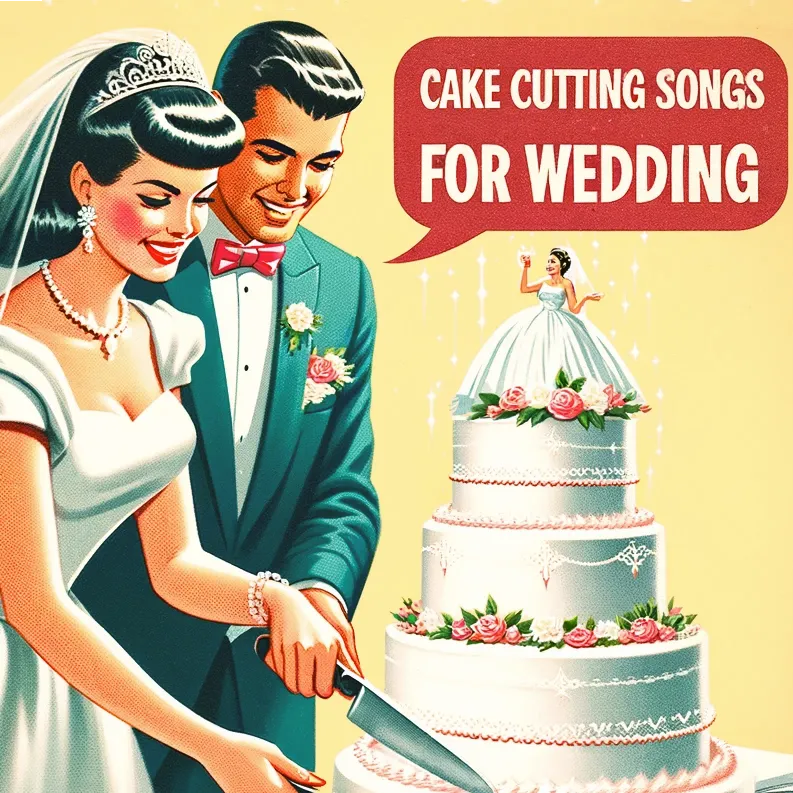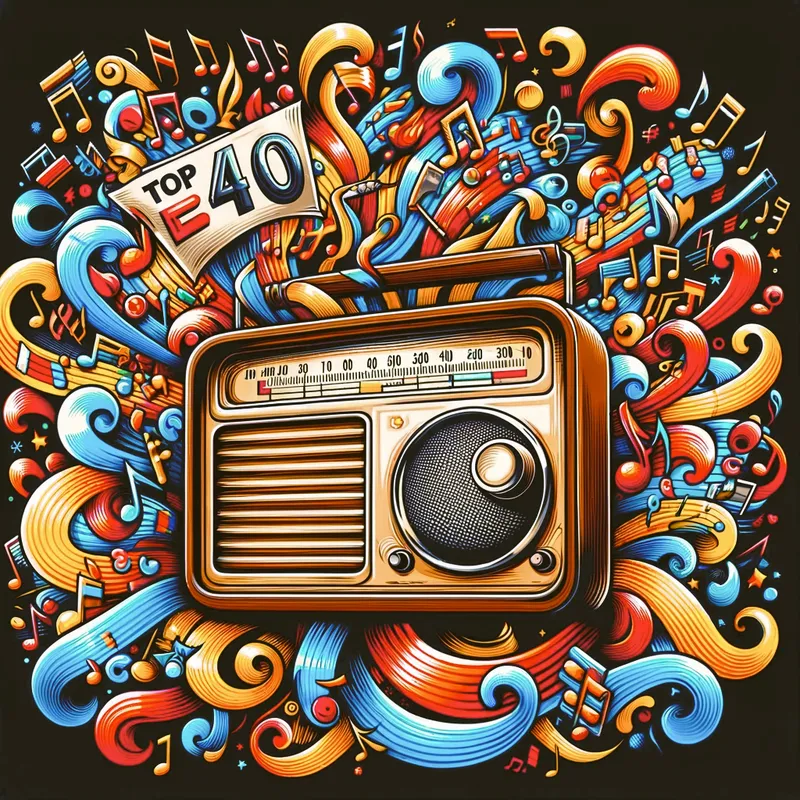Top 10 Songs of the 50s
The 1950s marked a transformative era in the world of music, giving birth to the rock and roll revolution. With pioneers like Elvis Presley, Chuck Berry, and Little Richard, the decade saw a fusion of rhythm and blues, country, and gospel that created a new sound that would capture the hearts of generations.
Rock and roll’s beats struck a chord with the youth, sparking a cultural shift and influencing fashion, dance, and attitudes. This era also witnessed the emergence of legendary labels like Sun Records, where artists like Johnny Cash and Jerry Lee Lewis recorded iconic tracks.
Notably, the 1950s brought electric guitars to the forefront, with artists using them to create electrifying solos. The decade also saw the rise of girl groups, doo-wop harmonies, and the birth of the Motown sound.
From the birth of the Billboard charts to the advent of television, the 1950s laid the foundation for the diverse musical landscape we enjoy today.
We have selected for you the top 10 hits of the 50s in our opinion:
1. Johnny B. Goode Chuck Berry
You may recognize ‘Johnny B. Goode’ from its inclusion in the legendary 1980s film, Back to the Future. However, this iconic song was originally released in the 1950s by the talented Chuck Berry.
The song portrays Berry’s own life journey – an aspiring musician emerging from modest origins, his unwavering love for the guitar, and a distinctive path that ultimately shaped his musical prowess. While certain specifics were altered, the song powerfully captures the essence of Berry’s life.
Notably, ‘Johnny B. Goode’ is often regarded as one of the greatest rock and roll songs of all time. Its energetic guitar riffs have influenced countless musicians and have been covered by numerous artists across various genres.
Additionally, the song’s title character, Johnny B. Goode, has become a symbol of the archetypal rock and roll hero, embodying the spirit of youthful rebellion and musical passion that defined the era.
2. Hound Dog – Elvis Presley
Undoubtedly one of Elvis Presley’s most iconic rock ‘n roll tracks, ‘Hound Dog’ remains a perennial contender for the title of the finest song from the 1950s. While Elvis recorded the hit in 1956, its origins trace back to Big Mama Thornton, who initially released it in 1953 – her sole chart-topping success.
Thornton’s rendition secured a place in the Rock and Roll Hall of Fame as a pivotal influence on the genre, yet it’s Elvis’s rendition that has attained widespread recognition, earning a spot in the esteemed list of the 500 Greatest Songs of All Time.
Elvis’s version of ‘Hound Dog’ not only propelled him further into the spotlight but also symbolized the spirit of rock ‘n roll. The song’s energetic rhythm, combined with Presley’s electrifying performance, captured the essence of the era’s youth rebellion.
3. Great Balls of Fire – Jerry Lee Lewis
Arguably one of the most legendary tracks integrated into the soundtracks of both film and television is Jerry Lee Lewis’s ‘Great Balls of Fire’.
Lewis, an avant-garde figure in the rock ‘n roll, played a pioneering role in shaping the genre. His pivotal contribution is vividly depicted in the Million Dollar Quartet, a stage jukebox production that revisits the momentous recording sessions of 1956. It brought together Jerry Lee Lewis, Elvis Presley, Carl Perkins, and Johnny Cash. Remarkably, the song ‘Great Balls of Fire‘ itself holds a prominent place within this production.
‘Great Balls of Fire’ not only solidified Jerry Lee Lewis’s status as a rock ‘n roll icon but also mirrored the zeitgeist of a generation.
4. Blue Suede Shoes – Carl Perkins
“Well, it’s one for the money, two for the show, three to get ready. Now go, cat, go!” sets the stage for a song that epitomizes the early rock ‘n roll era. These lyrics encapsulate the essence of the music of that era.
The timeless appeal of ‘Blue Suede Shoes’ can be attributed in part to its classic rock guitar and bass riffs, which have etched themselves into the music history. These distinctive elements helped elevate the song to a status of eminence, solidifying it as a quintessential work by Carl Perkins, a significant member of the renowned Million Dollar Quartet associated with Sun Records.
Carl Perkins, a significant member of the renowned Million Dollar Quartet associated with Sun Records, contributed to a musical revolution that reshaped the trajectory of popular music.
5. Rock Around the Clock – Bill Haley
Having found its place in the hit TV series Happy Days, ‘Rock Around the Clock’ is a tune that has likely graced most ears. This track holds the distinction of being one of the earliest rock songs to claim the coveted #1 spot on the charts.
Originally recorded in 1953 by Sonny Dae and His Nights, the song initially failed to garner significant recognition. However, a year later Bill Haley took the reins for Decca Records, recording the song and subsequently becoming the most recognizable vocalist associated with it.
Bill Haley’s rendition, with its vibrant rhythm and lively energy, propelled ‘Rock Around the Clock’ to the heights. It played a key role in rock and roll’s rise to mainstream prominence.
6. Wake Up Little Susie – The Everly Brothers
The song narrates a lighthearted tale of youthful romance – a boy and a girl venture to the cinema for a date, but a twist of fate leads to the girl falling asleep. This innocent escapade propels them past curfew, adding a touch of comedic tension to the narrative.
‘Wake Up Little Susie‘ captures the essence of its era, both in its thematic exploration of youthful adventures and its musical embodiment of the early rock ‘n roll sound.
7. Mack the Knife – Bobby Darin
Renowned vocalist Bobby Darin played a pivotal role in catapulting the song ‘Mack the Knife’ into the realms of fame. It was originally penned by Kurt Weill and Bertolt Brecht for the German theatrical production The Threepenny Opera in 1928.
Despite its somewhat ominous title, the song’s buoyant melody lends it an air of whimsy, masking the nefarious deeds of the character it portrays.
It was originally penned by Kurt Weill and Bertolt Brecht for the German theatrical production The Threepenny Opera in 1928. This theatrical composition weaved together the threads of drama, music, and social commentary, with ‘Mack the Knife’ serving as a characteristically sardonic commentary on society’s underbelly.
Bobby Darin chose to breathe new life into ‘Mack the Knife’ by recording his rendition in 1958. Through Darin’s rendition, the song metamorphosed into a cross-generational classic.
8. That’ll Be the Day – Buddy Holly & The Crickets
Released in 1957, the rockabilly sensation Buddy Holly brought ‘That’ll Be the Day’ to life when he re-recorded it alongside The Crickets. Interestingly, this chart-topping classic initially met with rejection by Decca Records during Holly’s earlier recording attempt with his band, The Three Tunes. Little did Decca know, their decision would become a missed opportunity, as ‘That’ll Be the Day’ eventually emerged as one of the defining anthems of the 1950s.
Notably, although credited to The Crickets, the song acted as a springboard for Holly’s meteoric rise, solidifying his status as a rock ‘n roll pioneer.
9. Tutti Frutti – Little Richard
“Tutti Frutti” is a classic rock ‘n roll song written by Little Richard and Dorothy LaBostrie, and it was first recorded in 1955. Known for its ebullient energy and vibrant lyrics, the song’s upbeat tempo and catchy melody contributed to its status as a groundbreaking hit of the 1950s.
“Tutti Frutti” is often celebrated as a prime example of the early rock ‘n roll sound.
10. I’ve Got You Under My Skin – Frank Sinatra
A beloved composition by Frank Sinatra, ‘I’ve Got You Under My Skin’ is a romantic ballad, describing a love so profound that it permeates one’s very being.
Surprisingly, the origins of this iconic song trace back to the renowned composer and songwriter Cole Porter, who crafted it in 1936 for the film musical Born to Dance. In the movie, the enchanting Virginia Bruce lent her voice to the song. What makes ‘I’ve Got You Under My Skin’ particularly intriguing is how Cole Porter ingeniously transformed a common phrase, usually associated with irritation, into a sentiment of passion.
Frank Sinatra’s rendition of the song solidified its status as a timeless masterpiece, etching its place in the history of romantic music.


